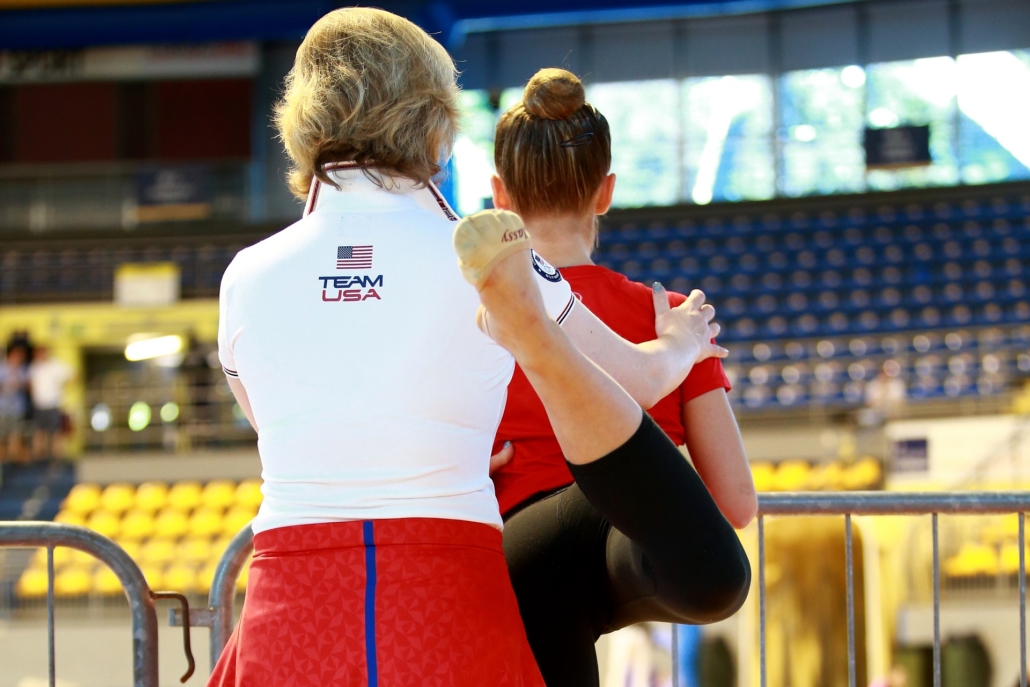National Councilof Strengthand Fitness (NCSF) is a USA based institution that offers different certification, i.e. “Personal-Trainer”, in “Sport Nutrition” and in “Strength Training”. NCSF Certified Strength Coach: I took the last mentioned course (Certified Strength Coach), which is approved by the National Commission for Certifying Agencies (NCCA).
NCSF Certified Strength CoachThis course is packed with the highest standards in the industry. It will boost your knowledge not only in strength training but also in performance assessment and evaluation, biomechanics, sport metabolism, nutrition and ergogenic aids, training techniques for athletic performance, advanced programming for sport, injury prevention and return to competition, an exercise (online) library and much more.
Stay tuned and read my review about this investment!
NCSF Certified Strength Coach – What’s on the schedule?

So, you’re planning to become a certified Strength and Conditioning Coach? Great! Congratulations to your decision as this is a very interesting, varied and exciting profession.
If you want to know where to start your journey search no more. You have found your tribe!
I’ve been doing the Certified Strength Coach by NCSF and I will tell you exactly what you can expect and give you my honest feedback.
To make a long story short I’ll start right away and will answer your most desirable question:
“Is this course worth the investment?”
To be honest: YES, IT IS! You will get the “most bang for your buck”. But hold on, I’ll tell you more about that in a minute. First, let’s try with what this elaborate course is made of.
At first you can choose your options. There are numerous “package prices” available. Ranging from as low as 299$ up to fair 599$ for the “Workshop Plus Package”.
The 299$ is for the “Exam Only” (499$). Besides that, you’re given the option to choose between the “Home Study Course & Exam” (549$), the “Home Study Plus Package”(549$), The “Workshop Course & Exam”(599$) and the “Workshop Plus Package”.
Where’s the difference? Good question. It mostly differs if you wish to receive a hard copy of the “Advanced Concepts of Strength & Conditioning Textbook” and whether you’d like to take the physical 2-day workshop instruction (16 hours) or prefer studying (online) at home.
Due to the fact that I’m from Germany, the most convenient thing for me was to take the “Home Study Course & Exam” and enjoy the digital edition of the “Advanced Concepts of Strength & Conditioning Textbook”.
NCSF Certified Strength Coach – Course Breakdown
In this part of the article I’ll give you a sneak peek of the separate units of the Certified Strength Coach (CSC) Program. Of course, due to the sheer amount of material and Copyright, I cannot provide you with every little detail of this marvelous course!
But, I’ll try to give you a delightful input as possible to wipe out all your doubts whether to take/invest in this course or not.
Unit 1 Performance Assessment and Evaluation
NCSF Certified Strength Coach: All the Units are structured the same. They are divided in sub-categories and always start with an overview of the Unit’s learning goals.
These are followed by lesson notes, a “Questions & Answers” section, a Quiz, the recommended textbook review and the Unit’s little Practice Exam.
Unit 1 logically commences with an introduction to strength and conditioning. In addition, you will make your first steps in sports analysis for program development as well as in performance assessment for elite athletes.

Unit 2 Biomechanics
NCSF Certified Strength Coach: Trying to be a good strength and conditioning coach you will also have the need of fundamental understanding of which muscle does what…and, if that might be the case, why it does not what it is supposed to do.
According to that, you will learn about the body’s biomechanics, respectively sport biomechanics in Unit 2 as well as how to integrate corrective exercises.
You will learn for example about concepts related to a functional skeletal system, principles of stability and balance, anatomy and function of the sling systems, concepts related to common upper and lower body postural distortions, postural assessments and much more.
Unit 3 Sport Metabolism
NCSF Certified Strength Coach: This unit will turn your view to the inside. Your inner world creates your outer! Not only in a spiritual sense but also in a biological.
Unit 3 acknowledges you in bioenergetics (the role of free energy in the body), energy sources used to meet immediate, intermediate and prolonged metabolic needs, how the metabolic systems complement each other during sport performance and training etc.
Furthermore will gain knowledge on how to “tailor” programs for specific motor unit adaptations including improved firing rates, increased recruitment and enhanced firing synchronicity.
Other examples are the primary physical/metabolic factors that result in muscle strain or damage as well as rhabdomyolysis, the ventilatory and lactate thresholds and applications for metabolic conditioning or the concepts of central and peripheral fatigue as well as factors related to fatigue prevention.
Unit 4 Nutrition and Ergogenic Aids
NCSF Certified Strength Coach:The term ergo/genic derives from Greek ergon = work, act, action, occupation; and Latin genus, respectively old Greek genos = root, gender, species (Becher et al., 1995). Therefore ergo/genic or “ergogenic aids” describes: “that what supports the action of human action”, respectively supplements.
You will learn how to maintain energy balance while competing as an elite athlete, about the various functions and types of dietary macronutrients and micronutrients, as well as guidelines for carbohydrate, protein, lipid, water, and micronutrient intake among elite athletes.
Other examples of this courses content are e.g.: nutrient timing for maximizing performance, protein synthesis, weight loss and/or recovery, effects of carbohydrate intake on sport performance or how to identify heat-related illnesses, body composition assessment and weight management among athletes.
Besides sport nutrition unit 4 will “nurture” (great pun, isn’t it? J ) you with ergogenic aids for sport performance.
You’ll be able to feed your brain for example with the potential risks associated with taking dietary supplements, the potential usefulness and dangers associated with the various ergogenic aids purported to be effective for improving performance and supplementation options for athletes with special needs (e.g., vegetarians).
Unit 5 Training Techniques for Athletic Performance
NCSF Certified Strength Coach: In Unit 5 you will really learn a lot about a solid foundation in:
- Performance Preparation
- Foundations and Technique for Olympic Weightlifting
- Theories and Concepts for Speed, Agility and Quickness Training
- Technique and Instruction for Speed, Agility and Quickness Training
Sounds a lot? Well, it is. But the cool thing is you don’t have to rely on pictures alone, when it comes to exercise explanations.

The old saying goes: “A picture is more worth than thousand words”. But I tell you what, a video might be worth a billion words! With pictures you can see a starting and a finishing point but you do not see what happens in between!
The Certified Strength Coach Course will provide you with an extensive and surplus excursive library with lots of explanatory videos, filmed from different angles.
But we’ll save that one for later (Unit 8).
In the first chapter of unit 5 you will learn e.g. the performance-related benefits of a warm-up, how to select warm-up activities that match the specific goals of participating athletes or how to properly apply self-myofascial release techniques to reduce movement restriction.
The learning goals of chapter 2 ( Foundation of Techniques for Olympic Weightlifting) of unit 5 will enhance your knowledge about proper form technique, spotting, teaching cues and common errors for the back squat, front squat, split squat and overhead squat.
Furthermore, you will learn about other proper techniques including exercises like the power snatch, and other Olympic lifts.
Theories and concepts for Speed, Agility and Quickness Training (Chapter 3) of Unit 5 deals for example with the biomechanical, neuromuscular and metabolic factors associated with speed and agility performance or concepts related to proper sprinting mechanics/form and common sprinting technique errors etc.
In “Technique and Instruction for Speed, Agility and Quickness Training” (chapter 4) of Unit 5 you will further learn i.e.:
- The primary categorical drills that can be used for speed, agility and quickness training
- How to differentiate between ballistic and plyometric drills for SAQ improvements
- How to differentiate between change of direction (COD) and agility drills
Unit 6 Advanced Programming for Sport
NCSF Certified Strength Coach: Like the chapter before, Unit 6 is “armed” with a myriad of “knowledge bombs”, ready to “blockbuster-bomb your brain”…with strength and conditioning knowledge.
Your gun cabinet is loaded with the following:
- Considerations for Programming
- Programming for Sport Performance
- Periodization Methods for Sport
- Conditioning for Intermittent Sports
- Training Methods for endurance Sports
Remember: “power is nothing without control”, that’s why you need to learn the basics first. And nothing ever beats the basics!

Unit 7 Injury prevention and Return to Competition

NCSF Certified Strength Coach: The most important task of a Strength and Conditioning Coach is to guarantee that an athlete stays injury free!
Therefore, Unit 7 deals with the primary focus during each phase of rehab (acute, intermediate, transition back to sport).
In addition, you will learn different types of exercises employed during physical therapy and sport rehab programs.
For each common sport injury you will be given examples of treatment options, sports associated with the highest prevalence, the mechanism of injury, risk factors and necessary training modifications and much more.
There will be suggestions of how to return-to-sport parameters (positive prognostic indicators) following rehab for each injury, which symptoms indicate a need for surgery or withdrawal from sport participation and a bunch of other useful stuff “out of the trenches”.
Unit 8 the Exercise Library
NCSF Certified Strength Coach: As already mentioned, Unit 8 is, as we say in German,: “das Herzstück” which means “the heart-piece” of the NCSF’s Strength and Conditioning Certification. At least from my point of view.
In this Unit you will be granted access to all the exercises that are mentioned throughout the course. These are well structured and really well shot.
You can see every exercise from different angles and Olympic weightlifting exercises are filled with “see through plates”, to give you the most information of proper execution as possible.
All these exercises say the most, by using the least amount of time. They are simply efficient!
The exercise library is listed in alphabetical order, starting with numbers. Here you will learn about drills, like:
- 30 Yard T-Drill
- 40 Yard Square Drill
- 5-Cone Star Drill
- 6-Cone Z-Drill
- others
If you’re from a country (like me) that uses the metric system you can easily convert the US system into meters instead of yards, so don’t worry J
In sum you will be able to watch over 300 videos!
Unit 9 Final Practice Exam
NCSF Certified Strength Coach: Unit 9 will give you the option to practice for your final exam. In this unit you can answer 100 multiple choice questions, all mixed together from all the other units.
In the real exam, though, you will have to answer 150 randomly selected multiple choice questions and your time limit is 3 hours.

How to study for Strength and Conditioning Certification
After having received my review about NCSF’s course material I’d like to give you my best technique of how to study for this certification.
There might be an uncountable number of learning techniques but here is the one I’ve been using over the years now, for all sorts of certifications.
It’s called “The Pomodoro- Technique” and I got to know it from my mentor, the most successful Strength Coach in history, Charles R. Poliquin (R.I.P.), also known as “Strength Sensei”.
What is this technique about? Let’s have a look at Wikipedia, aka “Mr. Know it all”.
“The Pomodoro Technique is a time management method developed by Francesco Cirillo in the late 1980s. The technique uses a timer to break down work into intervals, traditionally 25 minutes in length, separated by short breaks. Each interval is known as a pomodoro, from the Italian word for ‘tomato’, after the tomato-shaped kitchen timer that Cirillo used as a university student.”
Between each blocks, respectively “pomodoro” I’ll stand up and do some mobility exercises, like deep squatting etc. for a break of 5 minutes before returning to concentration.
Recently I merged to incorporate a standing desk while working in my office and while learning. This is a very cool tool to prevent e.g. upper- and lower crossed syndrome!
How to master learning for Strength and Conditioning Certification?
If you have to learn lots of stuff in a relatively short amount of time you can’t simply learn everything by heart. Due to the overwhelming amount of information it is simply impossible to recall everything and anytime.
Anyway, I’d never recommend only learning things by heart! I propose you to start thinking in principles! Try to understand HOW things work instead of simply trying to memorize them!
Another great tip is learning how to decrypt Latin and (old) Greek vocabulary. No, of course you do not have to learn both of these languages to take a Strength and Conditioning Certificate.
However, once you have gained proper knowledge in related nomenclature you will find everything more easy to learn and understand. Plus you will strongly benefit from it while working in the field of medical professionals!
I speak out of experience as I’m also a “Heilpraktiker” (“heal practitioner”). A profession that is – in this form – only available in Germany and (with restrictions) in Switzerland. A proper translation would be something like “Complementary and alternative medicine practitioner”.
We are allowed to diagnose and treat diseases (with restrictions) and do invasive treatments, e.g. infusions or injections, without being a medical doctor. For this profession I studied for years and I found it extremely beneficial to learn Latin and Greek terms!
NCSF Certified Strength Coach – Conclusion

I don’t want to sound like a broken record but I’ll say it again: The NCSF Certified Strength Coach is a total investment!
You’ll probably have noticed that I wrote “investment” instead of “cost”. That’s not just to sound fancy but to tell you the difference between investment and expenses.
Sure, at first you will have to spend money but in the long run you will learn more, to earn more! Therefore the NCSF Certified Strength Coach is something that will be a return on investment for you.
So, to sum it all up, if you’re looking for a profound start to your career in the field of Strength and Conditioning you definitely should take this course.
On top of the online learning material you’ll either receive the digital version of the “Advanced Concepts of Strength & Conditioning Textbook “ and/or the print version. Keep in mind that that’s an additional 650+ page “knowledge bomb”!
Take a look for yourself, under: http://www.ncsf.org/
© HP Bernd Stößlein, Master of Business Administration in Sportmanagement.
If you liked this article please share it with your friends, subscribe to the newsletter and the blog.
If you like to book a professional online/offline consultation please feel free to contact me:
Literature
Griechisch-lateinischer Wortschatz in der Medizin, S. 76.
Griechisch-lateinischer Wortschatz in der Medizin, S. 88.
Pomodoro Technique, source: https://en.wikipedia.org/wiki/Pomodoro_Technique, acces from 24.7.2020.

